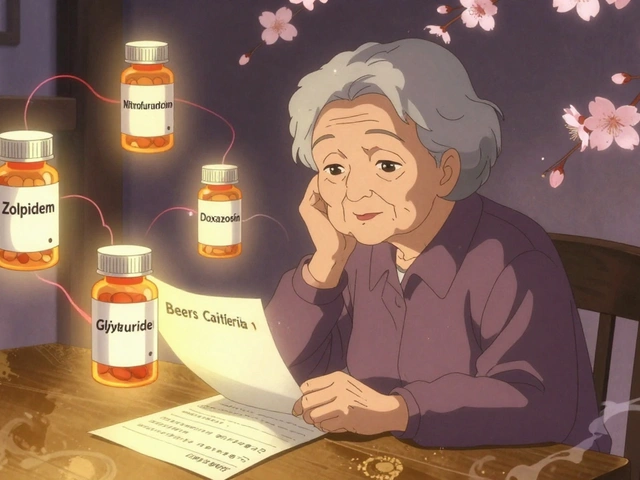
When a patient takes a pill that combines two medicines-like blood pressure drugs or asthma treatments-it’s not just about mixing chemicals. The body has to absorb both drugs the same way, every time. That’s where bioequivalence comes in. For generic versions of these combination products to be approved, regulators must be sure they work just like the brand-name version. But unlike a simple tablet with one active ingredient, combination products come with hidden complications. These aren’t just harder to test-they’re often impossible to evaluate with traditional methods.
Why Combination Products Are Different
A fixed-dose combination (FDC) packs two or more active drugs into one pill, patch, inhaler, or cream. Think of it like a recipe: if you change the flour or sugar in a cake, the whole thing bakes differently. The same happens with drugs. When two chemicals are combined, they can interfere with each other’s absorption, breakdown, or how they move through the body. One drug might slow down the other. One might bind to the other and prevent it from working. That’s why you can’t just test each drug separately and assume the combination behaves the same. The U.S. Food and Drug Administration (FDA) requires generic versions of these products to prove they deliver the same amount of each active ingredient into the bloodstream at the same speed as the original. That’s the definition of bioequivalence. But for a single-drug tablet, that’s usually done with 24 to 36 healthy volunteers. For an FDC? You might need 40 to 60 people. And instead of one blood test per person, you need multiple tests for each drug-sometimes over several days. The study design becomes a three-way crossover: patients get the generic, the brand-name combo, and the two individual drugs separately. That’s expensive. It’s time-consuming. And it’s not always reliable.The Topical Problem: Creams and Ointments
Skin creams and ointments that combine steroids with antifungals or vitamin D analogs are another headache. You can’t just measure drug levels in the blood. These drugs are meant to stay in the skin. So how do you prove the generic cream delivers the same amount to the right layer of skin as the brand? The FDA says to use tape-stripping-peeling off 15 to 20 thin layers of skin with sticky tape and measuring how much drug is in each layer. But here’s the problem: no one agrees on how thick each layer should be, how much tape to use, or where on the body to test. One lab’s results might not match another’s. A generic company spent over two years trying to get approval for a calcipotriene/betamethasone foam. Three bioequivalence studies failed because the drug penetration measurements kept varying. No one knew why. These studies don’t just take longer-they cost way more. While a standard bioequivalence study runs $1 to $2 million, a topical product study can hit $5 to $10 million. Most small generic manufacturers can’t afford that. So they don’t try. That means patients keep paying high prices for brand-name topical combos, even when the patents have expired.Drug-Device Combos: It’s Not Just the Medicine
Inhalers, auto-injectors, and nasal sprays are even trickier. These aren’t just pills or creams. They’re machines. A generic inhaler might have the same active drug, but if the button feels different, the spray pattern changes, or the valve opens a millisecond slower, the drug won’t reach the lungs the same way. The FDA says the aerosol particle size must be within 80-120% of the original. That sounds precise-but measuring it requires expensive equipment and trained technicians. And even then, real-world use matters. If a patient can’t coordinate the spray with their breath because the inhaler feels awkward, the drug won’t work. According to the FDA, 65% of rejection letters for generic drug-device products cite problems with user interface testing. That’s not about chemistry. It’s about ergonomics. A patient might not notice the difference, but the device’s design affects how much medicine actually gets delivered. Generic makers don’t have the resources to test dozens of user groups across different ages and physical abilities. So many applications get stuck in review limbo.
Modified-Release Formulations: The High-Stakes Game
Drugs that release slowly over 12 or 24 hours are especially risky. If the generic releases the drug too fast, it can cause side effects. Too slow, and it won’t work. For drugs with a narrow therapeutic index-like warfarin or epilepsy meds-the acceptable range for bioequivalence is tighter: 90-111% instead of the usual 80-125%. That’s a much harder bar to hit. In 2023, the FDA reported that 35-40% of initial applications for modified-release FDCs failed. One company spent $22 million and five years trying to get a generic version of a two-drug extended-release combo approved. They failed twice before finally succeeding with a new formulation.Why the System Is Broken
The current rules were built for simple pills. They weren’t designed for today’s complex medicines. Experts like Dr. Lawrence Yu from the FDA admit the "one-size-fits-all" approach doesn’t work anymore. The same bioequivalence standards used for aspirin are being applied to inhalers that deliver biologics. That’s like using a ruler to measure the speed of light. Generic manufacturers are frustrated. Teva reported that 42% of their complex product failures were due to bioequivalence issues. Mylan (now Viatris) said development timelines for topical products stretched by 18 to 24 months. Small companies are getting squeezed out. A 2023 survey of 35 generic firms found 89% thought the current requirements were "unreasonably challenging." Only big players with deep pockets can afford the labs, the staff, and the repeated trial attempts.
What’s Being Done?
There’s hope. The FDA launched its Complex Generic Products Initiative in 2018 and has since created 12 product-specific bioequivalence guidelines. These are tailored rules for specific drugs-like HIV combos or psoriasis creams-that replace the generic one-size-fits-all approach. Companies that follow these guidelines see development times drop by 8 to 12 months. New tools are emerging too. Physiologically-based pharmacokinetic (PBPK) modeling uses computer simulations to predict how a drug behaves in the body based on its chemistry and the patient’s physiology. It’s not perfect-but it’s getting better. Seventeen generic approvals since 2020 have used PBPK modeling to reduce or even replace clinical trials. That cuts costs by 30-50%. The FDA is also working with NIST to create standardized reference materials for complex products. For inhalers, that means a known particle size standard everyone can test against. For topical creams, it could mean a standardized skin model. These aren’t just lab tools-they’re fairness tools. They level the playing field.The Bigger Picture
Combination products make up 38% of the global generic drug market-$112.7 billion in 2023. Yet, they take nearly three times longer to approve than simple generics. The average approval time for a complex product is 38.2 months. For a regular tablet? Just 14.5 months. That delay costs patients money and delays access to affordable care. If regulators don’t fix this, 45% of complex brand drugs may still have no generic competition by 2030. That means millions of people-especially those on fixed incomes-will keep paying hundreds of dollars a month for medicines that could cost a fraction of the price.What’s Next?
The FDA’s 2024 draft guidance includes 15 new product-specific recommendations, with a focus on respiratory products-where 78% of submissions currently fail bioequivalence testing. A new "Bioequivalence Modernization Initiative" aims to create 50 new guidelines by 2027. That’s progress. But it’s not enough. What’s needed is a shift in thinking: stop trying to force complex products into old rules. Start building new ones. Invest in better testing tools. Support small manufacturers with funding and technical help. Standardize measurements across labs. Accept modeling where clinical data is impractical. The goal isn’t just to approve more generics. It’s to make sure every generic version works as well as the original-no matter how complex the product. Because when a patient takes a combo pill or uses an inhaler, they shouldn’t have to wonder if the generic is truly the same. They deserve certainty. And the system should be built to deliver it.What is bioequivalence for combination products?
Bioequivalence for combination products means proving that a generic version delivers the same amount of each active ingredient into the body at the same rate as the brand-name version. This applies to fixed-dose combinations (like pills with two drugs), topical creams, and drug-device products like inhalers. It’s not enough to match the ingredients-you must prove they behave the same way in the body.
Why are combination products harder to test than single-drug products?
Combination products have multiple active ingredients that can interact with each other-slowing absorption, changing breakdown rates, or binding together. Testing requires measuring each drug separately, often in complex study designs with more participants and longer timelines. For topical or inhaled products, you also need to prove the drug reaches the right tissue, not just the bloodstream. Traditional blood tests don’t work for these.
What’s the biggest challenge with generic inhalers?
The biggest challenge is the user interface. Even if the drug is identical, a different button pressure, spray timing, or inhaler shape can change how much medicine reaches the lungs. The FDA requires aerosol particle size to match the brand within 80-120%, but testing this requires expensive equipment. More importantly, 65% of rejection letters cite user interface issues-not chemistry. Patients must be able to use the device correctly, and that’s hard to standardize.
How much does it cost to develop a generic combination product?
Developing a generic combination product can cost $15-25 million and take 3-5 years. Bioequivalence studies alone make up 30-40% of that cost. For topical products, clinical trials can hit $5-10 million per study. Small companies often can’t afford it, which is why only large manufacturers dominate this space.
Are there any new solutions to these challenges?
Yes. The FDA now accepts computer modeling (PBPK) to predict how drugs behave in the body, reducing the need for costly human trials. They’ve also created 12 product-specific bioequivalence guidelines for common combinations like HIV meds and psoriasis creams. New reference standards from NIST will help labs measure inhalers and topical products more accurately. These tools are making approvals faster and more predictable.
Why does this matter for patients?
If generic versions of combination products aren’t approved, patients pay full brand prices-even after patents expire. That can mean hundreds of dollars a month for asthma inhalers, diabetes combos, or psoriasis creams. Faster, fairer bioequivalence rules mean more affordable options. That’s not just good for budgets-it’s good for health.





Mira Adam
November 27, 2025 AT 18:30This system is a joke. We're using 1980s logic to regulate 2024 medicine. You want bioequivalence? Fine. But don't force a cream developer to peel skin with tape like some kind of forensic archaeologist while charging $8 million per trial. The FDA isn't protecting patients-they're protecting Big Pharma's profit margins under the guise of science.
Miriam Lohrum
November 28, 2025 AT 22:30It’s fascinating how we treat drug delivery like it’s just chemistry, when it’s really biology meeting engineering meeting human behavior. A pill doesn’t care if you’re 70 and arthritic. But an inhaler? It knows. And if the button feels wrong, your lungs never get the dose. We’re measuring molecules but ignoring the hands that hold them.
archana das
November 30, 2025 AT 11:21In India, we use generic inhalers every day. Many people can’t afford the brand. But if the generic doesn’t work right, it’s not just money lost-it’s breath lost. Why can’t we make testing simpler? Why must the poor pay with their health because the rich have too many lawyers and too much money to make rules that don’t fit real life?
Emma Dovener
December 1, 2025 AT 04:24There’s a quiet revolution happening in PBPK modeling. It’s not magic-it’s math, physics, and physiology stitched together with machine learning. We’ve seen it cut approval times for complex generics by half. The FDA’s new guidelines are a start, but they’re still too cautious. We need to stop treating computer models as ‘second-class evidence.’ They’re the future.
Sue Haskett
December 3, 2025 AT 02:43Let’s be real: if you can’t measure it, you can’t prove it. But if you’re measuring skin tape strips with inconsistent thickness, or aerosol particle sizes with equipment that costs more than a luxury car… then you’re not measuring science-you’re measuring chaos. Standardized reference materials from NIST? Finally. Someone’s listening. But where’s the funding for small labs to actually use them?
Rhiana Grob
December 3, 2025 AT 20:11Patients deserve certainty. But certainty doesn’t come from rigid rules-it comes from smart, adaptive science. We’ve spent decades applying aspirin standards to inhalers and creams. That’s like using a bicycle speedometer to measure a jet’s Mach number. The solution isn’t more bureaucracy-it’s better tools, better collaboration, and the courage to say: ‘This old method doesn’t work anymore.’
Rebecca Price
December 5, 2025 AT 13:10Oh, so now we’re going to let computers simulate drug behavior instead of actually testing it on humans? Brilliant. Let’s just run a simulation, click ‘approve,’ and hand out generics like candy. Next, we’ll have AI prescribing insulin based on a spreadsheet. The FDA’s ‘modernization’ sounds less like innovation and more like cost-cutting disguised as progress. Where’s the data? Where’s the safety? And who’s going to pay when it goes wrong?
shawn monroe
December 5, 2025 AT 23:42Bro. The inhaler thing? It’s not just particle size-it’s the damn USER EXPERIENCE. If the button clicks too hard, or the spray feels like a sneeze from a dragon, old folks and kids with asthma can’t use it. 65% of rejections are UX? That’s not a regulatory issue-it’s a DESIGN FAILURE. We need engineers, not just chemists, at the table. Also, PBPK modeling is the future, and anyone who says otherwise is stuck in the 20th century. 🚀🧪
marie HUREL
December 7, 2025 AT 00:08I’ve worked in a small generic lab. We tried to get a topical combo approved. Three studies. All failed. Not because the drug was wrong-because the tape-stripping protocol varied by 12% between labs. We spent $4 million and lost two years. No one told us the standard was a suggestion. We need one method. One standard. One rulebook. Not 12 different ways to peel skin and call it science.